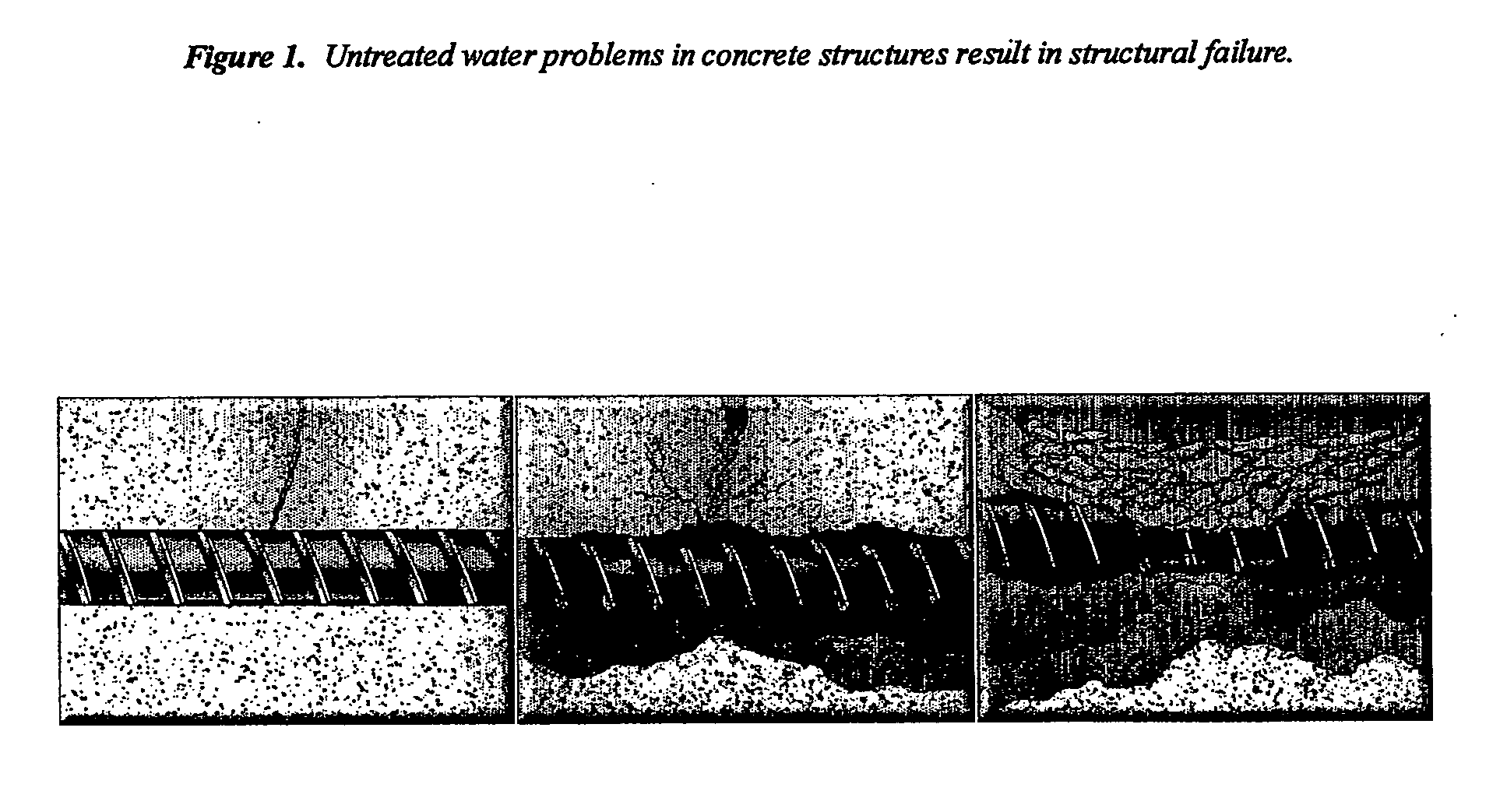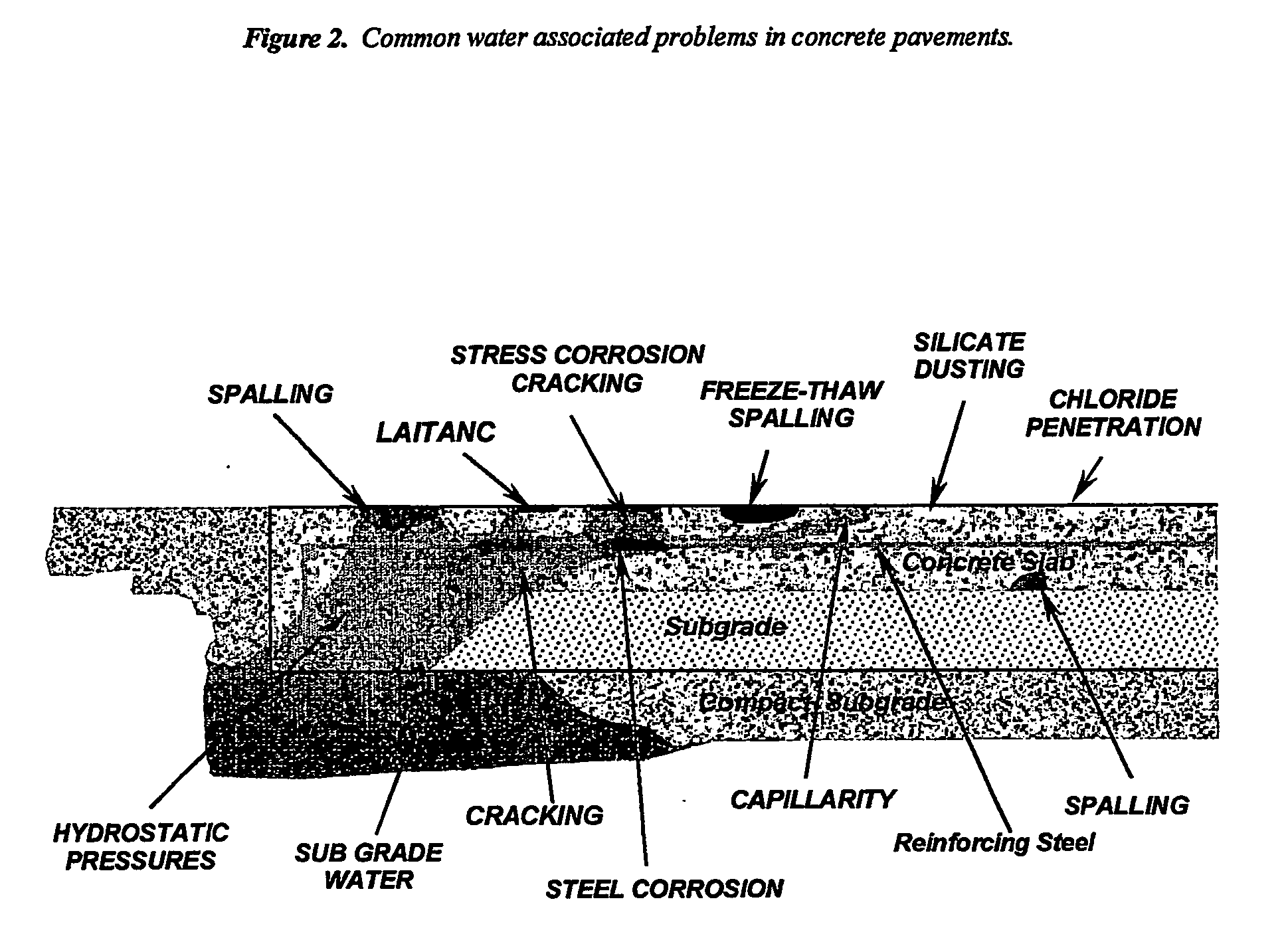Aqueous chemical mixture to mitigate water associated problems in concrete pavements
a concrete pavement and water-based technology, applied in the direction of inorganic adhesives, single-unit pavings, paving details, etc., can solve the problems of concrete deterioration, further problems, and reduce the life span of concrete structures
- Summary
- Abstract
- Description
- Claims
- Application Information
AI Technical Summary
Benefits of technology
Problems solved by technology
Method used
Image
Examples
Embodiment Construction
[0075] The present invention is recommended for the treatment and protection of large scale concrete pavements, mainly concrete bridges, concrete highways and airport runways and concrete taxiways. Application of the invention can be very simple, through a spraying mechanism that is adequate enough to spray large areas in a short period of time. Rolling or brushing or other application techniques are also possible. The recommended coverage of the invention at an anticipated dilution rate is 200 ft2 / gallon in a single application. During the application of preferred embodiments there would be no need for a complete closure of areas to be treated. In fact they could be opened to traffic shortly after the treatment, since the mixture preferably penetrates through the surface in a relatively rapid process because of a preferred low viscosity.
[0076] After the product is applied and as soon as its water starts to dry, the chemical action starts to take place at the surface as well as dee...
PUM
| Property | Measurement | Unit |
|---|---|---|
| viscosity | aaaaa | aaaaa |
| weight | aaaaa | aaaaa |
| aqueous | aaaaa | aaaaa |
Abstract
Description
Claims
Application Information
 Login to View More
Login to View More - R&D
- Intellectual Property
- Life Sciences
- Materials
- Tech Scout
- Unparalleled Data Quality
- Higher Quality Content
- 60% Fewer Hallucinations
Browse by: Latest US Patents, China's latest patents, Technical Efficacy Thesaurus, Application Domain, Technology Topic, Popular Technical Reports.
© 2025 PatSnap. All rights reserved.Legal|Privacy policy|Modern Slavery Act Transparency Statement|Sitemap|About US| Contact US: help@patsnap.com



